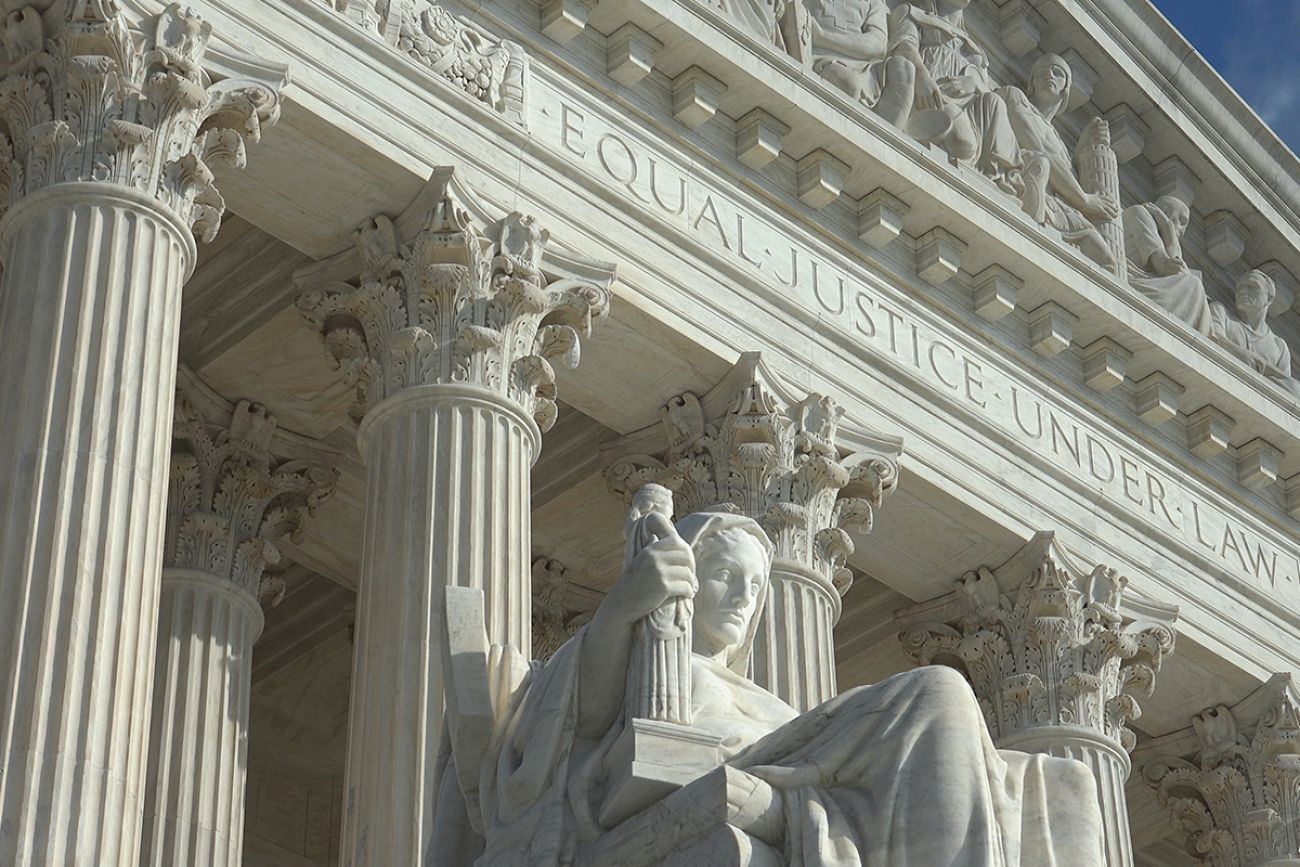Key quotes from Friday’s U.S. Supreme Court abortion ruling

July 6: Michigan abortion-rights ballot measure has 800k signatures, organizer says
June 28: Michigan abortion ballot issue gets surge in volunteers, signatures
In tough, uncompromising, at times caustic language, a conservative majority of the U.S. Supreme Court and its three liberal dissenters debated the court’s dramatic reversal of its 1973 ruling in Roe v. Wade, which established a woman’s right to abortion.
Over more than 200 pages, the justices parried arguments with ideological foes and — in the case of the conservatives — each other, on historical and legal justifications for overturning Roe, and a later Supreme Court case upholding it, Planned Parenthood v. Casey, and returning abortion law determinations to the states.
They also argued over whether Roe’s reversal also raised doubts about the future of other landmark decisions establishing constitutional privacy rights, such as cases on contraception, same-sex relations and same-sex marriage.
Related:
- Abortion confusion reigns across Michigan days after Roe reversal
- Abortion providers may face charges in Kent, Jackson counties, attorney says
- With Roe overturned, Michigan becomes an abortion ‘haven,’ for now
- Roe v. Wade overturned in blockbuster ruling. Abortion still legal in Michigan
- Laws banning sodomy, gay marriage on books in Michigan. Some fear what’s next.
Here are highlights of what the justices had to say:
Justice Samuel Alito, writing for the majority
The court’s holding:
“We therefore hold that the Constitution does not confer a right to abortion. Roe and Casey must be overruled, and the authority to regulate abortion must be returned to the people and their elected representatives.”
“The inescapable conclusion is that a right to abortion is not deeply rooted in the Nation’s history and traditions. On the contrary, an unbroken tradition of prohibiting abortion on pain of criminal punishment persisted from the earliest days of the common law until 1973.”
Criticizing the Roe decision:
"Roe found that the Constitution implicitly conferred a right to obtain an abortion, but it failed to ground its decision in text, history, or precedent. It relied on an erroneous historical narrative; it devoted great attention to and presumably relied on matters that have no bearing on the meaning of the Constitution; it disregarded the fundamental difference between the precedents on which it relied and the question before the Court; it concocted an elaborate set of rules, with different restrictions for each trimester of pregnancy, but it did not explain how this veritable code could be teased out of anything in the Constitution, the history of abortion laws, prior precedent, or any other cited source; and its most important rule (that States cannot protect fetal life prior to “viability”) was never raised by any party and has never been plausibly explained."
Its decision does not call into question other landmark rulings based on privacy rights including the court’s 2015 decision recognizing the right of same-sex couples to marry, and decisions striking down sodomy laws and contraception bans:
“(B)ut have stated unequivocally that ‘[n]othing in this opinion should be understood to cast doubt on precedents that do not concern abortion.”
“We have also explained why that is so: rights regarding contraception and same-sex relationships are inherently different from the right to abortion because the latter (as we have stressed) uniquely involves what Roe and Casey termed ‘potential life.’”
The effect of the ruling:
“Our decision returns the issue of abortion to [state] legislative bodies, and it allows women on both sides of the abortion issue to seek to affect the legislative process by influencing public opinion, lobbying legislators, voting, and running for office. Women are not without electoral or political power. It is noteworthy that the percentage of women who register to vote and cast ballots is consistently higher than the percentage of men who do so. In the last election in November 2020, women, who make up around 51.5 percent of the population of Mississippi,” constituted 55.5 percent of the voters who cast ballots.”
Justice Clarence Thomas, concurring
Thomas sided with the majority but wrote a concurring opinion to note he is not on board with the notion that other landmark privacy rulings are safe after Friday’s ruling. He specifically noted the court’s decisions on same-sex marriage and contraception among others:
“(In) future cases, we should reconsider all of this Court’s substantive due process precedents, including Griswold [contraception], Lawrence [sodomy], and Obergefell [same-sex marriage]. Because any substantive due process decision is “demonstrably erroneous,” we have a duty to “correct the error” established in those precedents.”
“After overruling these demonstrably erroneous decisions, the question would remain whether other constitutional provisions guarantee the myriad rights that our substantive due process cases have generated.”
Justices Stephen Breyer, Sonia Sotomayor and Elena Kagan, in dissent
“Roe held, and Casey reaffirmed, that the Constitution safeguards a woman’s right to decide for herself whether to bear a child. Roe held, and Casey reaffirmed, that in the first stages of pregnancy, the government could not make that choice for women. The government could not control a woman’s body or the course of a woman’s life: It could not determine what the woman’s future would be.”
“With sorrow — for this Court, but more, for the many millions of American women who have today lost a fundamental constitutional protection — we dissent.”
Recognizing Roe and Casey struck a balance between the right of women to control decisions over their bodies and the right of a fetus that may become a child:
“(T)he Court discards that balance. It says that from the very moment of fertilization, a woman has no rights to speak of. A State can force her to bring a pregnancy to term, even at the steepest personal and familial costs. An abortion restriction, the majority holds, is permissible whenever rational, the lowest level of scrutiny known to the law. And because, as the Court has often stated, protecting fetal life is rational, States will feel free to enact all manner of restrictions.”
Where Friday’s ruling may lead:
“But some States will not stop there. Perhaps, in the wake of today’s decision, a state law will criminalize the woman’s conduct too, incarcerating or fining her for daring to seek or obtain an abortion.”
“Some states have enacted laws extending to all forms of abortion procedure, including taking medication in one’s own home…They have passed laws without any exceptions for when the woman is the victim of rape or incest. Under those laws, a woman will have to bear her rapist’s child or a young girl her father’s — no matter if doing so will destroy her life.”
“...The right Roe and Casey recognized does not stand alone. To the contrary, the Court has linked it for decades to other settled freedoms involving bodily integrity, familial relationships, and procreation.”
“So one of two things must be true. Either the majority does not really believe in its own reasoning. Or if it does, all rights that have no history stretching back to the mid-19th century are insecure. Either the mass of the majority’s opinion is hypocrisy, or additional constitutional rights are under threat. It is one or the other.”
On the majority’s lack of respect for court precedent:
“Stare decisis is the Latin phrase for a foundation stone of the rule of law: that things decided should stay decided unless there is a very good reason for change. It is a doctrine of judicial modesty and humility. Those qualities are not evident in today’s opinion. The majority has no good reason for the upheaval in law and society it sets off. Roe and Casey have been the law of the land for decades, shaping women’s expectations of their choices when an unplanned pregnancy occurs.”
On Justice Brett Kavanaugh’s concurring statement that the ruling is neutral:
“His idea is that neutrality lies in giving the abortion issue to the States, where some can go one way and some another. But would he say that the Court is being “scrupulously neutral” if it allowed New York and California to ban all the guns they want? If the Court allowed some States to use unanimous juries and others not? If the Court told the States: Decide for yourselves whether to put restrictions on church attendance?
… What, then, of the right to contraception or same-sex marriage? Would it be “scrupulously neutral” for the Court to eliminate those rights too? The point of all these examples is that when it comes to rights, the Court does not act “neutrally” when it leaves everything up to the States.”
If you would like to read the full opinion you can here.
See what new members are saying about why they donated to Bridge Michigan:
- “In order for this information to be accurate and unbiased it must be underwritten by its readers, not by special interests.” - Larry S.
- “Not many other media sources report on the topics Bridge does.” - Susan B.
- “Your journalism is outstanding and rare these days.” - Mark S.
If you want to ensure the future of nonpartisan, nonprofit Michigan journalism, please become a member today. You, too, will be asked why you donated and maybe we'll feature your quote next time!



